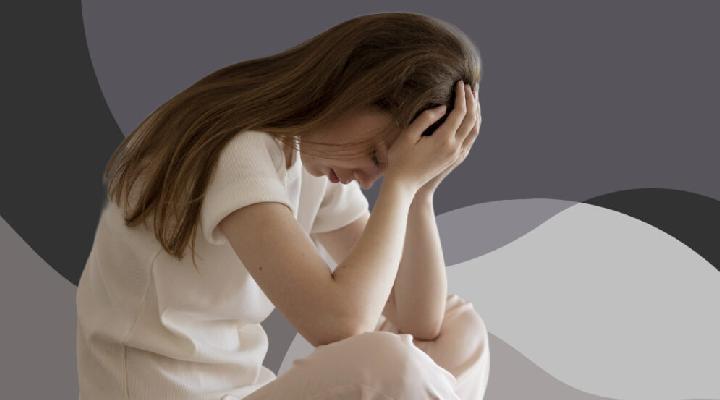How much do you enjoy trying new things? Do you experience fear and anxiety when facing what is unfamiliar to you? In this article, we will introduce you to neophobia, which most of us have probably encountered at least once. If you want to know what neophobia is, its symptoms, and treatment methods, stay with us until the end of this article.
What is neophobia?
Neophobia or neophobia is the fear of new things. This type of phobia is relatively complex; some psychologists do not consider it a separate mental illness or disorder. However, if this disorder has specific symptoms, it can be viewed as a phobia.
This type of phobia may be mild or severe. Neophobia is initially defined as the fear of certain things, such as new foods or places, but in advanced stages, it may affect a person’s life and relationships.
Symptoms of neophobia
Panic disorder has different physical, psychological, and behavioral symptoms. Some of the physical symptoms of this type of phobia are:
- shortness of breath ;
- dizziness;
- increase in heart rate;
- nausea;
- Shivering
The psychological symptoms of this disorder include the following:
- feeling anxious;
- feeling unreal;
- fear of death
People’s physical and psychological reactions when encountering new things fuel this phobia’s behavioral symptoms. These behavioral signs may appear as avoiding or tolerating new experiences and extreme distress.
Neophobia challenges the human need for new things with the fear of their unfamiliarity. In its mildest state, this disorder is not even considered fear. Some people are more risk-takers than others, and there is nothing wrong with preferring the comfortable routine of life to experience new things.
How to diagnose panic disorder?
Because some psychologists do not consider neophobia a severe disorder, the problem of people with this disorder often goes undiagnosed. Of course, if they have these symptoms, their illness is taken seriously:
- Feeling irrational and excessive fear in response to new things;
- A reaction in the form of immediate fear when encountering new things;
- Reluctance to try new things or extreme discomfort when faced with them.
For this phobia to be diagnosed, the symptoms must be permanent and last six months or more. They cannot be related to other mental disorders such as agoraphobia or panic attacks.
What are the causes of neophobia?

1. Genetic issues
Panic disorder may be the result of several factors together. The first factor is related to genetics. Having a close relative who suffers from anxiety increases the likelihood of developing a phobia.
2. History of trauma
Uncomfortable experiences or trauma may also play a role in forming this type of phobia. These incidents may lead to neophobia and make a person afraid of trying new things. The reason is that the person is fearful of repeating the trauma.
3. Fear of success and failure
This phobia is probably related to the dual fear of success and failure. To achieve true success or failure, one must take risks. These two results may change a person’s life and force him to adapt to new conditions. People with phobias may feel that the potential benefits of success are not worth the possible upheavals in their lives.
4. Getting used to the routine of life
In general, people are slaves to their habits. They often live in the same house for decades, work for the same employer, drive the same car, and even eat the same food on holidays. In this situation, new things may make life difficult for some people.
5. getting to know
Familiarity with new phenomena also affects people’s preferences. The more a person is exposed to something, the more they will like it. This problem is called the “exposure effect” or “familiarity principle.”
Sometimes, especially when dealing with stress, letting go of the familiar is a way to adapt. For example, researchers have found that re-watching TV series is a way to reduce feelings of anxiety as well as self-control.
Familiarity is the reason that makes people enjoy eating simple and repetitive foods. When people are tired or stressed, familiarity becomes a way to calm them down.
It is possible that the endless selection of familiar things gradually causes hesitation to accept strange things. Sometimes the fear of the unknown is normal, but if this fear becomes too uncomfortable and limiting, it indicates the problem is more serious.
What are the complications of anxiety?
A little fear of new things does not cause significant problems in a person’s life. This fear may mean that he likes predictable options or prefers the routine of life. This can lead to a boring life, but people can often overcome this problem consciously.
Suffering from moderate or severe neophobia can disrupt a person’s daily life. Getting stuck in a monotonous life cycle is not much trouble and keeps you satisfied with yourself. Some people consciously decide not to shine at work or school, some avoid traveling to new destinations for vacations, and some choose not to pursue new friendships.
Types of Neophobia in Children and Adults
Young children often have more symptoms of monophobia than others. The world is new to them, and resistance to change can be the only inherent need to achieve stability in an ever-changing world.
Many older adults also develop mild neophobia for similar reasons. As people age, they sometimes look for familiar things that give them a sense of mastery. In such cases, they prefer to remain in their comfortable and friendly environment.
1. Food neophobia

This phobia is more common in children when the child is reluctant to eat or try new foods. This phobia is common among children aged 2 to 5 and is often called malnutrition.
The common causes of food phobia in children are:
- The child’s natural desire for sweet tastes or delicious foods;
- his feeling towards a food (for example, a child may be upset by the sensation that Harira creates in his mouth);
- Parents who pressure their children to eat;
- Failure to encourage or express affection from parents during meals;
- childhood anxiety;
- a diet with little variety or little food quality;
- The influence of parents on children’s eating habits.
Children with food neophobia are reluctant to try new foods, become agitated or anxious while eating, or avoid social events and parties related to fresh foods.
If a child eats for under 30 minutes or refuses to eat certain foods, such as vegetables, he probably has food neophobia. This phobia becomes dangerous if the child faces weight loss or malnutrition.
2. Cenophobia
Fear of new ideas or xenophobia is a form of neophobia. When suffering from this phobia, the person’s progress stops, and he cannot quickly accept new ideas and changes. While it’s wise to reject every idea, adopting new ways of thinking about a situation dramatically increases the likelihood of success, innovation, and practical problem-solving.
What is the treatment of neophobia?
Cognitive behavioral therapy is the first way to treat specific phobias such as phobias. This method focuses on helping people change negative thought patterns that lead to fear and avoidance behaviors. Instead of fearing new things or experiences, people may attribute these thoughts to their anticipation or excitement.
Exposure therapy is one of the cognitive behavioral therapy methods that can help treat phobias. In this method, people are gradually exposed to what they fear. Over time, their sense of fear will diminish. People with neophobia can also start treatment by being exposed to new things or experiences, such as ordering a new dish at their favorite restaurant. Finally, they continue healing by visiting unfamiliar and challenging sources, such as traveling to a new city.
How to prevent panic attacks?
Specific phobias, such as neophobia, are easy to treat. Methods such as Shakhti behavioral therapy, exposure therapy, drug therapy, and supportive care can reduce the disorder’s symptoms and improve the person’s life and performance.
Some of the factors that cause this phobia cannot be prevented, but identifying them can help a person to get early treatment and prevent this disorder. Some of these factors are:
- Genetics;
- individual experiences;
- History of trauma.
What are the ways to deal with neophobia?
If you are afraid of facing new things, you can take help of some measures to deal with this disorder. These things, along with professional treatment, will help you to control panic attacks and anxiety caused by it:
- Start with small things. Gradual exposure to small new things will help you get used to new experiences.
- Find a way to relax. Using relaxation techniques helps to better deal with fear and anxiety. Conscious and deep breathing is one of the methods proven to be effective when stress overwhelms us.
- Distract yourself. When faced with the unfamiliar, look for ways to distract from the source of the fear.
Coping with children’s food neophobia
Food phobia in children is best treated with medical care. Seeking help from a nutritionist, food therapist or consulting with a mental health professional or psychotherapist can effectively treat eating disorders in children. In addition to these methods, parents can help the child to deal with this disorder in other ways:
- Teaching the concept of eating and food anxiety;
- Stopping anything that causes the child to be malnourished;
- teaching him the ability to try new foods;
- Using advanced tricks to make it easier for a child to eat.
It would be best to forget that food neophobia is a common disorder among children and can be dealt with by reducing the pressure on the child while eating.
you say
Neophobia is a disorder that can harm people’s lives. This may cause you to miss opportunities, relationships, and experiences that bring happiness and wealth. Knowing what neophobia is and how to prevent and treat it will help you deal with it.
Have you ever had this phobia? How do you think you can deal with the fear of new things?
Warning! This article is only for educational purposes; to use it, it is necessary to consult a doctor or specialist.



